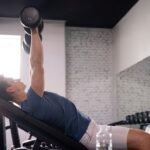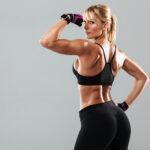Chest Dip: Exercise Overview
The chest dip is a powerful bodyweight exercise designed to target the pectoralis major, particularly the lower chest, while also engaging the triceps, anterior deltoids, and core as stabilizing muscles. By following a vertical pressing pattern, it provides a unique stimulus compared to horizontal presses like the decline bench press, making it an excellent choice for building chest strength and definition. Ideal for developing upper-body pushing power, the chest dip is best mastered using bodyweight before progressing to weighted variations (e.g., with vests or belts). It’s a versatile addition to chest-focused workouts, push routines, upper-body sessions, or full-body training programs, supporting both aesthetic and functional goals for lifters of all levels (Schoenfeld, 2010).
How to Perform the Chest Dip
- Step onto a dip station (if available) and grasp the parallel bars with a neutral grip (palms facing inward), arms extended, and body suspended—this is your starting position.
- Lean slightly forward to emphasize chest activation, keeping your elbows slightly flared and core braced to minimize swinging.
- Lower your body by bending your elbows, descending with control until your forearms are nearly parallel to the floor or you feel a stretch in your chest.
- Pause briefly at the bottom, then push through your palms to drive your body back to the starting position, stopping just short of full elbow lockout.
- Repeat for the desired number of repetitions.
Modification: Beginners can use a resistance band or perform assisted dips to build strength before progressing to unassisted bodyweight dips.
Tips for Optimal Performance
- Emphasize Chest Activation: Lean forward slightly and allow your elbows to flare outward to target the chest more effectively, as opposed to staying upright for triceps focus (Kohler et al., 2010).
- Control the Movement: Lower and raise your body slowly to maximize muscle engagement and avoid momentum, reducing strain on the shoulders (Schoenfeld, 2016).
- Maintain Proper Posture: Keep your glutes and abs engaged to limit excessive spinal movement and maintain a stable torso (McGill, 2010).
- Avoid Head Jutting: Keep your head aligned with your spine to prevent neck strain during the descent.
- Use a False Grip if Comfortable: Experiment with wrapping your thumbs over the bar for a more comfortable grip, depending on wrist and hand positioning (Wirth et al., 2016).
- Breathe Properly: Inhale as you lower your body and exhale as you push back up to support core stability and muscle oxygenation.
Mastering chest dips for lower pecs? Dive into our Ultimate Guide to Muscle Groups for complete chest development.







